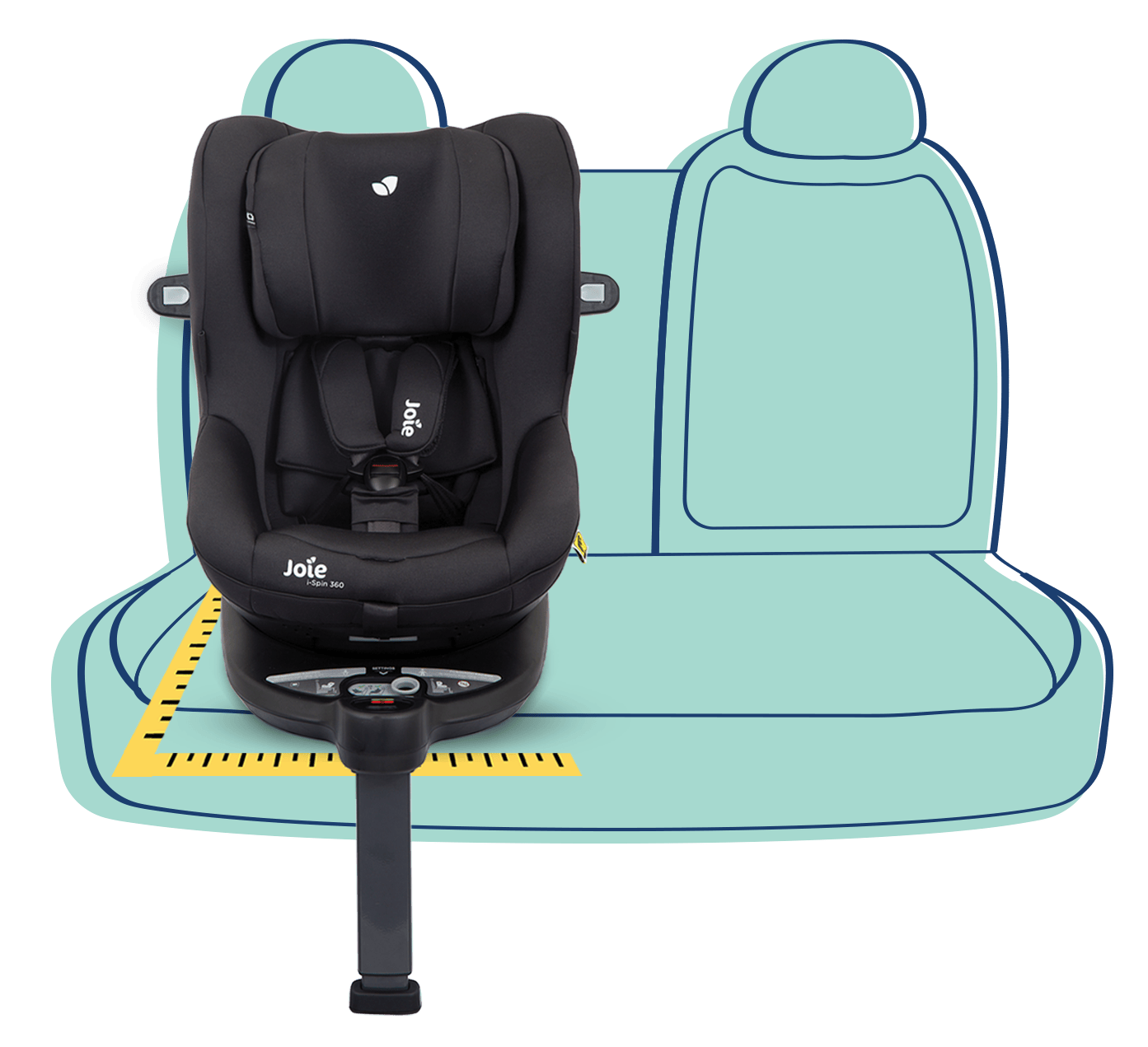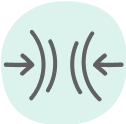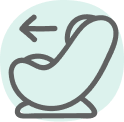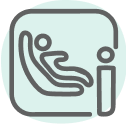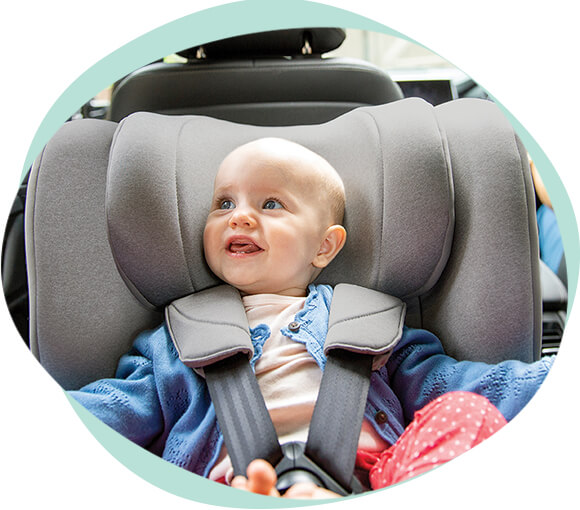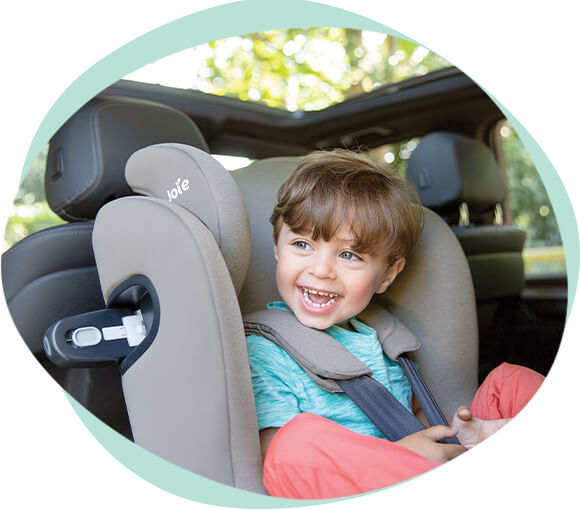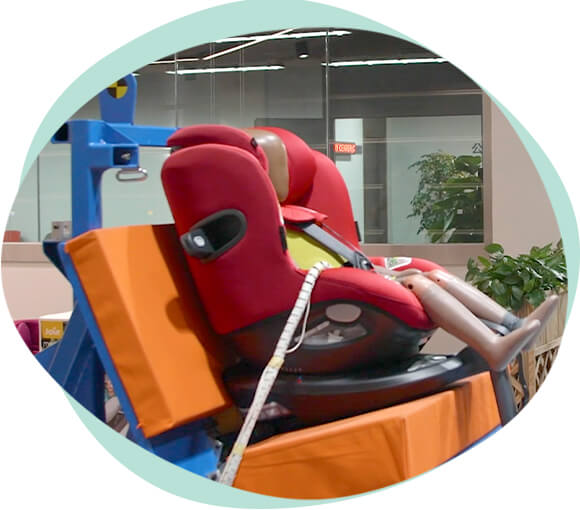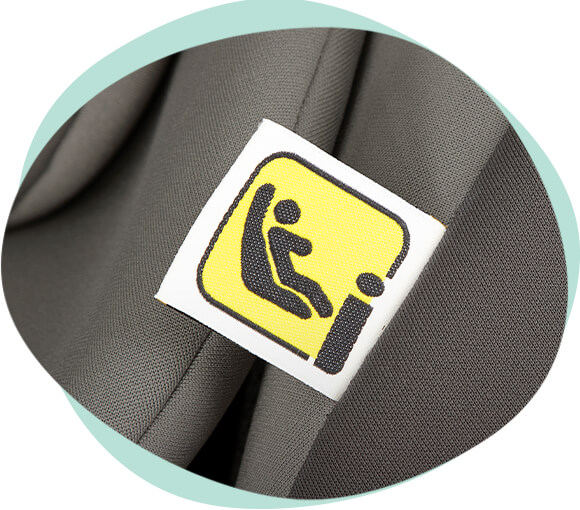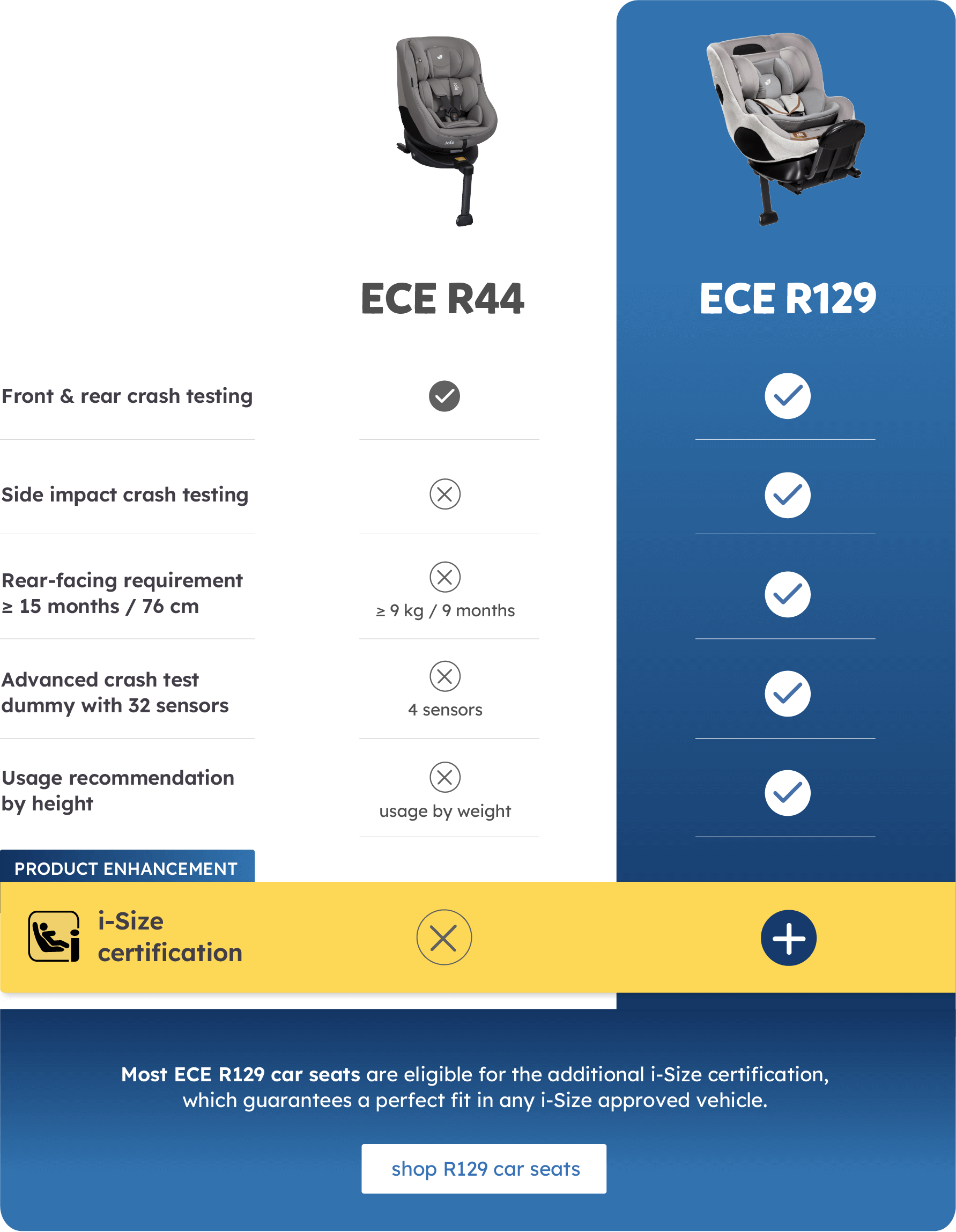これはデモストアです。ご注文は処理されません。
i-SizeはECE R129の強化版です。
Joieのチャイルドシートの多くは、英国およびEUの最新かつ最先端のチャイルドシート規制であるECE R129に適合しています。さらに多くのシートがi-Size認証を取得し、後部座席のフィット感を保証しています。i-Sizeをお買い求めいただくと、ECE R129の安全性と利便性を備えた、より安全でスマートな乗り心地をお楽しみいただけます。
アイコンをタップして詳細をご覧ください!
側面衝撃認証
より長い後向き
最新版のダミーテスト
ベターフィットフォーミュラ
i-Size認証

"i"は信頼の証。
"i"
と一緒にお出かけしましょう。
"i"と一緒にお出かけしましょう。
最高水準のECE R129安全規則を満たし、i-Size認証を受けたチャイルドシートをお探しですか?それならば簡単です。Joieチャイルドシートの名前の先頭に「i」(例:i-Prodigi™)の文字を探してみてください。また、当ウェブサイトの製品ページでもi-SizeおよびECE R129の情報を確認することができます。
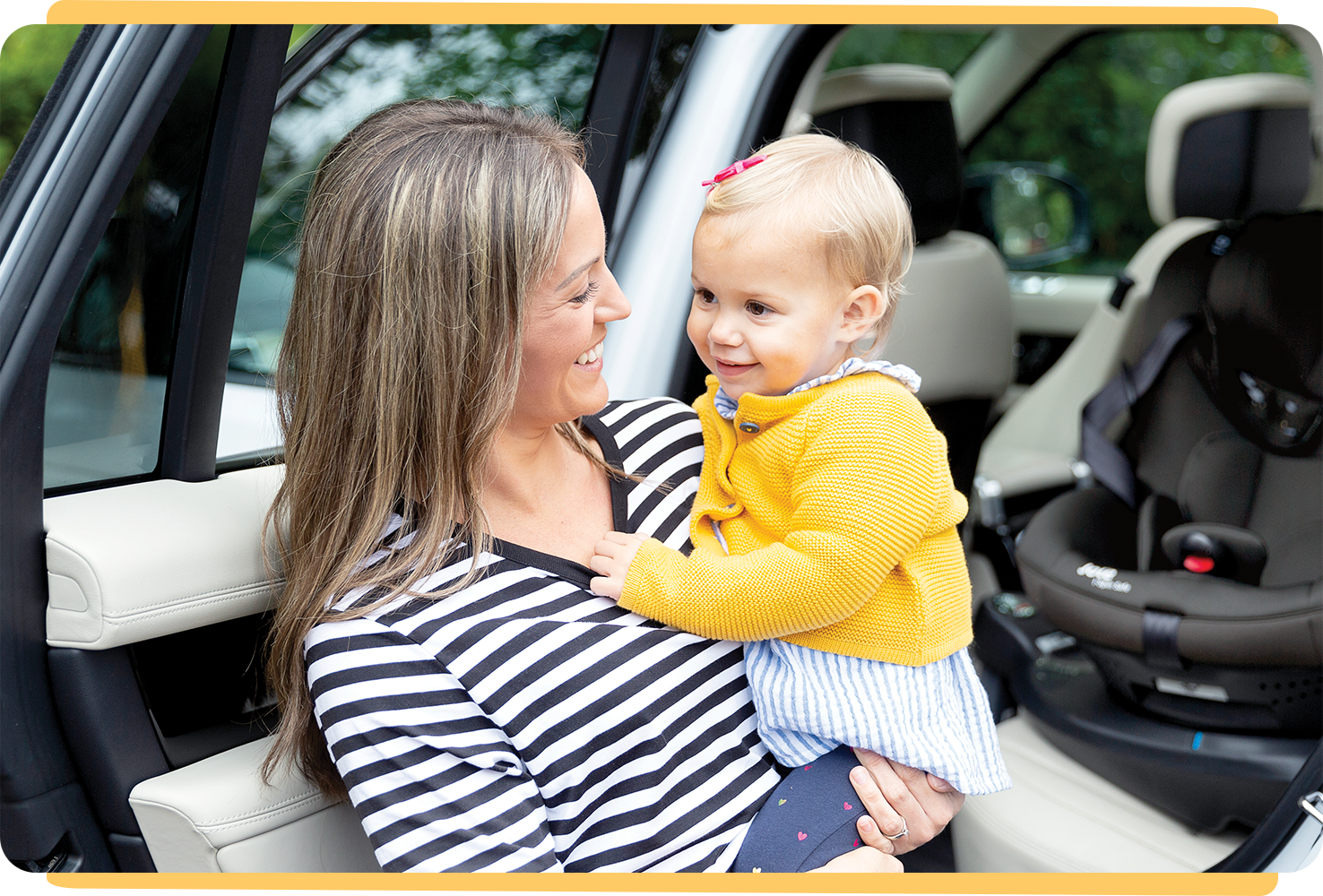
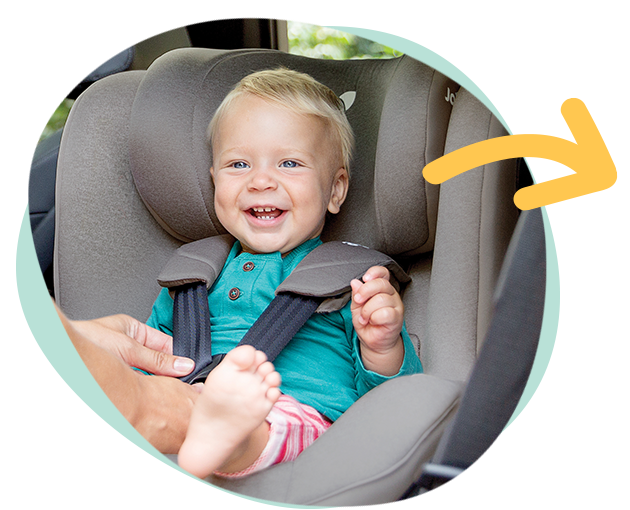
ECE R129とi-size
って何が違うの?
これまで、チャイルドシートに関するウェブサイトの情報や雑誌記事などにおいて正確な区別を行なうことなく使用されてきたため、ECE R129とi-Sizeは同じ意味だと考えられがちでした。
もちろんJoieの製品も同様ですが、「ECE R129適合」「i-Size対応」、どちらのチャイルドシートも、高度な衝突試験用ダミー人形を使った正面衝突試験と側面衝突試験を受け、お子さまが身長76cmまたは生後約15ヶ月になるまでは後ろ向きでの装着が義務付けられ、適切な使用のために体重ではなく身長を基準に使用するチャイルドシート、という点では共通しています。しかし、以下の2つの重要な点で異なります。
ECE R129とは
欧州のチャイルドシート安全規制
1.ECE R129は、日本を含む主要な国において相互認証されている最新の欧州チャイルドシート安全基準のことを指しています。ECE R129では旧基準(ECE R44/04)と異なり、側面衝突保護の基準が設けられ、また、旧基準よりもチャイルドシートを後ろ向きで使用しなければならない期間が長くなりました。
旧基準とは違って、チャイルドシートのタイプごとの使用可能な期間をお子さまの体重ではなく、身長を基準として定めることにより、お子さまに最適なチャイルドシートをより分かりやすく簡単に見つけられるようになりました。
i-Sizeとは
車両適合性の認証基準
2. これに対して、i-Sizeは、チャイルドシートとチャイルドシートを取り付ける車両、座席との互換性をより簡単に確認できるようにするための基準です。i-Sizeが目指す最終的な目標は、すべてのチャイルドシートがすべての車両に適合するようにして、チャイルドシートの誤った取り付けのリスクを軽減することにあります。お使いの自動車の座席がi-Sizeに対応する場合、原則としてi-Size認証を受けたチャイルドシートを取り付けることができます。i-Sizeは、ECE R129の制定に伴い設定された新たな概念の基準ですので、すべてのi-Sizeに対応するチャイルドシートはECE R129基準を満たしていますが、i-Sizeは座席との互換性を示すものですのでECE R129基準に適合しているからと言って、i-Sizeに対応しているとは限りません。
安全なチャイルドシートをご購入いただくためには、まずはECE R129に適合したチャイルドシートをお探しください。そして、そこに黄色いi-Sizeのマークが表示されていれば、そのチャイルドシートはi-Sizeにも対応しています。もし、まだ不明な点があれば下記のFAQをご覧ください。
ECE R129 & Iサイズ Q&A
すべての親御さんがそうであるように、私たちもあなたがお子さんの安全をできる限り守ることに集中していることを知っています。また、多くの疑問があり、調べる時間がないことも承知しています。ECE R129とi-Sizeに関する複雑な質問については、以下をお読みください。
ECE R129ってなに?
ECE R129は、2013年7月に批准されたチャイルドシートの安全性に関する新しいEU規格です。それ以来、ECE R129は旧試験規格であるECE R44/04と並行して実施されてきました。2023年9月1日以降、ECE R129はECE R44に代わってEUで承認された唯一のチャイルドシート試験規格となる。2024年9月以降、EU域内の消費者にはECE R129のチャイルドシートのみが合法的に販売されることになる(ECE R44は、EU域内のイングランド、ウェールズ、スコットランドでは2024年9月1日の販売停止日以降も販売を継続できる)。
ECE R129はどのように子供の安全を守るのか?
ECE R129の規制は、少なくとも15ヵ月までは後向きで使用することを義務付けることで、後向きでの使用をより長く推進するものである。さらに、ECE R129では、子どもの頭部と頸部の保護を向上させるため、側面衝突試験の基準が初めて義務化された。Joieは常に率先して側面衝突試験を実施してきましたが、新規制により業界全体で基準を満たすことができるようになります。
ECE R129では、"Q "ダミーと呼ばれる最もハイテクな衝突試験用ダミーを使用している。このダミーは、より高い感度をテストするために感覚技術が改良されただけでなく、身体の傷つきやすい部位により多くのセンサーを備えている。これは、衝突時に何が起こるかをより深く理解し、チャイルドシートの設計を改善できることを意味する。
従来の「新生児用」ダミー(「P」ダミー)は布製でセンサーがなかった。新しい「Q」新生児ダミーには、頭部、頸部、胸部、骨盤の重要な位置に4つのセンサーが搭載された。これらのセンサーは非常に繊細で、新生児の体のもろさをシミュレートするように設計されている。
ECE R44規格が制定されて以来、私たちが運転するクルマは劇的に変化し、事故時に何が起こるかについての知識も変化しました。ECE R129は、チャイルドシートをテストするための最新かつ最も安全な基準です。ECE R129は、チャイルドシートに対するより正確なフィット感、側面衝突の基準、後ろ向きシートの長さなどを導入しています。また、ECE R129は、子どもの脆弱な身体をより正確にシミュレートするために設計された最新のダミー感覚技術を利用している。つまり、ECE R129のチャイルドシートは、より良く、より安全で、より強く設計されているのです。
ECE R129はi-Sizeと同じものですか?
そうではありません!すべてのi-SizeチャイルドシートはECE R129安全基準に基づいてテストされていますが、すべてのECE R129チャイルドシートがi-Size認証を受けているわけではありません。すべてのi-SizeチャイルドシートはECE R129安全基準に基づいてテストされていますが、すべてのECE R129チャイルドシートがi-Size認証を受けているわけではありません。
i-Sizeは、ECE R129安全基準を強化したもので、i-Sizeが承認する座席位置がある車両であれば、チャイルドシートの適合性を簡単に確認できるようにするものです。i-Sizeの背景には、すべてのチャイルドシートが最終的にすべての車に適合するという考えがあります。
前向き抱っこは、なぜ15ヶ月以上でないと許可されないのですか?
「調査によると、赤ちゃんの首はまだ頭を支えるのに十分な強さを持っていません。そのため、ECE R129では、お子様の首が平均的な前方からの衝突を支えるのに必要な強さを発達させるため、最低76cm、15ヶ月までは前向き乗車を認めていません。Joieのチャイルドシートの多くは、後向きや横向きの安全性を高めているため、ECE R129の規定を超え、約4歳まで後向きでの使用を推奨しています。
なぜ側面衝突試験と標準化が重要なのか?
ECE R44規格には側面衝突試験が含まれていませんが、事故はあらゆる側面から起こるものです。Joieは常に側面衝突保護に対する最も厳しい基準を維持してきましたが、新しいECE R129規格は、側面衝突性能の基準を業界全体に義務付けるものです。
i-Sizeにはどのような車両機能が必要ですか?
車両にはISOFIXが装備され、より厳しいスペース対シート比の要件に従わなければなりません。ご自分の車がi-Sizeの規定を満たしているかどうか、車の取扱説明書を確認してください。ほとんどの場合、ISOFIXが装備されていれば、すでにi-Sizeに対応している可能性があります。
R129のシートはすべてiサイズか?
そうとは言えません。i-SizeチャイルドシートはすべてECE R129認証を取得していますが、ECE R129認証を取得したシートすべてがi-Sizeというわけではありません。i-Sizeは、チャイルドシートがi-Size認定車両に適合するかどうかを簡単に確認できるため、誤った取り付けのリスクを軽減できます。さらに、i-Sizeチャイルドシートは、車内の特定のボックスに収まる必要があります。i-Sizeのチャイルドシートは、ECE R129の基準に従って厳格にテストされています。赤ちゃんにとって安全です。
i-SizeのシートはすべてISOFIXを使って取り付けるのですか?
ほとんどがそうですが、すべてではありません。i-Size認定乳幼児キャリアの中には、購入し取り付けた場合、適合するISOFIXベースでの取り付けに加え、車両シートベルトを使用して車両に取り付けることができるものもあります。
すべてのi-Sizeハイバック・ブースターシートにはISOFIXがありますか?
ベルト付きブースターシート(100~150cmのお子様に使用可能)と呼ばれる年長のお子様が使用するチャイルドシートについては、i-Sizeとして認証されるために車両のISOFIXポイントに接続する必要はありません。多くのブースターにはISOFIXシステムが装備されていますが、i-Sizeブースターの中にはベルト装着のみのものもあります。
ECE R129のチャイルドシートには、i-Size認証のような幅の制限がありますか?
ECE R129チャイルドシートにもi-Sizeと同様に幅の制限がありますが、若干異なります。身長105cm以下のチャイルドシートは、i-Sizeチャイルドシートと同じ44cmの幅を必要としますが、ECE R129には適合していてもi-Sizeには適合していない理由があります。年長のチャイルドシートカテゴリー(100cm~150cm)では、ECE R129シートの幅は最大52cmまで認められています。i-Size認証を受けたチャイルドシートの中には、取り外し可能なサイドインパクトポッドを使用すると、当然この幅になるものがありますが、このポッドは取り外し可能であるため、i-Sizeとして分類することが認められています。ポッドを取り外すと、チャイルドシートの幅はi-Size認証の最大許容幅44cmに収まる。
車のシートにi-Sizeチャイルドシートを3台並べて使用できますか?
ほとんどの場合、ECE R129のベルト付きチャイルドシートを車両の中央に装着することができます。しかし、外側の2つのチャイルドシートをISOFIXで装着した場合、3つのチャイルドシートを横付けするにはスペースが不足する場合があります。このような場合は、L104ベルト付きECE R129チャイルドシートを3つ使用することもあります。
私の車にはi-Sizeの外側の座席が2つしかないのですが、i-Sizeのチャイルドシートを3つ横に並べることはできますか?
たいていの場合、ベルト付きECE R129チャイルドシートを車両の中央に取り付けることができます。しかし、外側の2つのチャイルドシートをISOFIXで装着した場合、3つのチャイルドシートを横付けするにはスペースが足りない場合があります。そのため、3つのベルト付きECE R129チャイルドシートを使用して3人乗りを実現しなければならない場合があります。
i-Size認証の座席にブースターシートを取り付ける場合、常にISOFIXコネクターを使用できますか?
ほとんどの場合、そうです!ISOFIXは、車両のシートベルトがお子様を拘束している間、車両のシート上でブースターシートを安定させるために使用できます。しかし、一部の車両では、車両ベルトのバックルの位置により、ブースターシートのISOFIXコネクターの使用が制限されますが、車両メーカーは、車両ベルトを使用した方がチャイルドシートの取り付けがはるかに簡単であるにもかかわらず、座席位置をi-Sizeとして認証することができます。
ECE R129とi-Sizeチャイルドシートが身長ベースになっているのに、なぜ体重がまだ重要なのですか?
チャイルドシートにも最大乗車重量があり、これは主な指標である子供の身長と同様に監視することが重要です。ISOFIXチャイルドシートの場合、チャイルドシートと子供の体重を合わせた合計重量が33kgを超えないことが重要です。従来、ECE R44規則では、グループ1のチャイルドシートの乗車定員は18kgでした。新しいECE R129規則では、シートの重量によって乗員の耐荷重が異なります。例えば、シートの重量が13kgの場合、乗員の最大体重は20kgです。シートの重量が15kgの場合、最大乗員重量は18kgです。
エブリステージR129がハーネスモードで前を向けないのはなぜですか?
いい質問ですね!ECE R129に基づくベルト付きチャイルドシートは、取り付けを簡素化し、ユーザーのミスを減らすために、乗員拘束方法ごとに1つのベルト経路に制限されるようになりました。後ろ向きモードと前向きモードがあるエブリイステージR129のようなマルチモードのチャイルドシートでは、ハーネスモードとベルト付きブースターモードで使用できるベルト経路は1つだけです(以前は2つのベルト経路がありました)。 R129の各ステージに影響する新しいベルトパスの制限は、40~105cmの範囲で内部ハーネスを使用した後ろ向き移動を優先します。その後、100~145cmのブースターモードでは、シンプルなベルト経路を使用してチャイルドシートを前方に向けることができ、車両のベルトが乗員とエブリステージR129シート自体の両方の主要な拘束手段となります。

